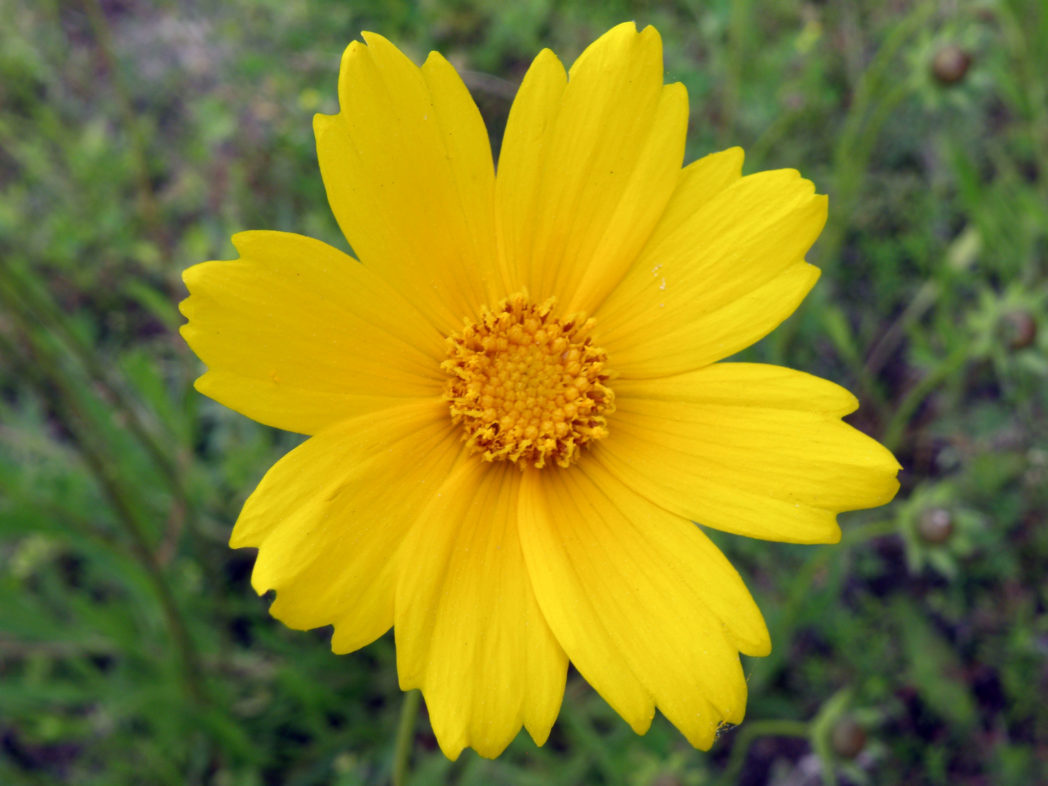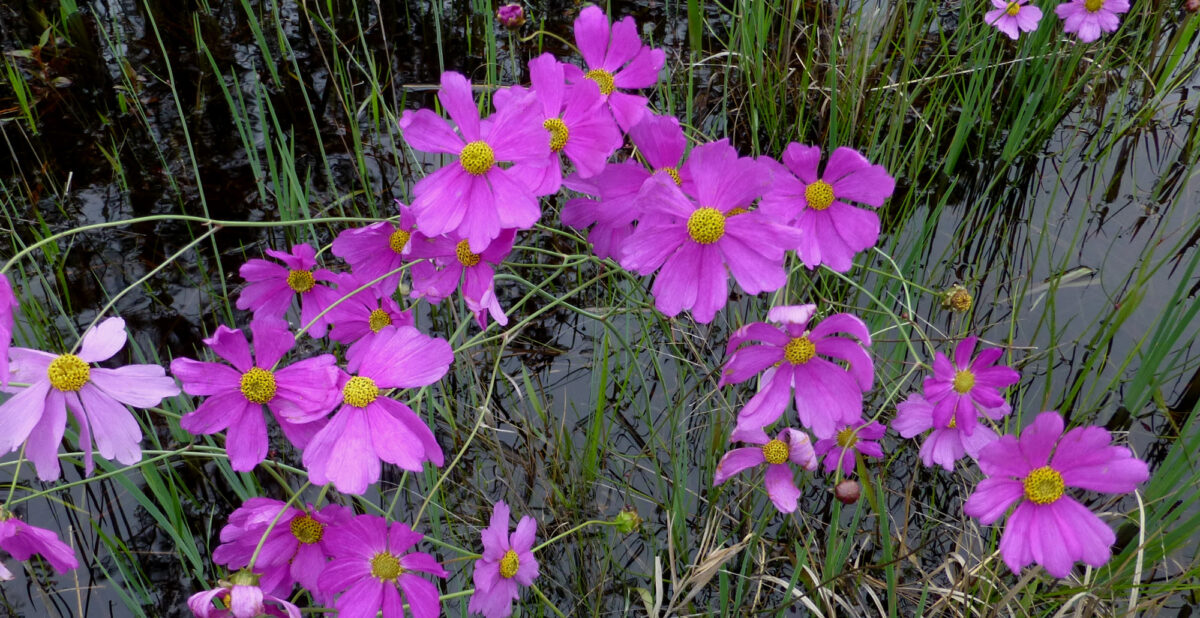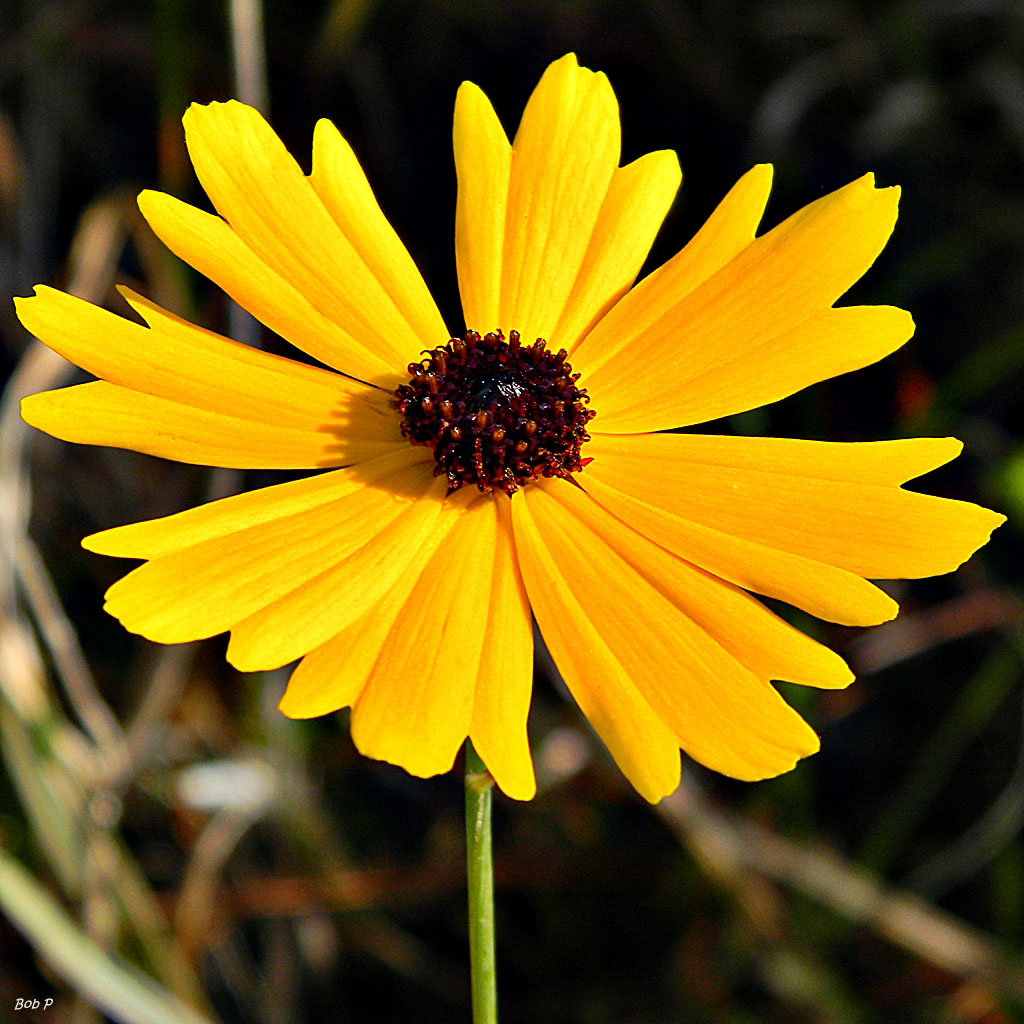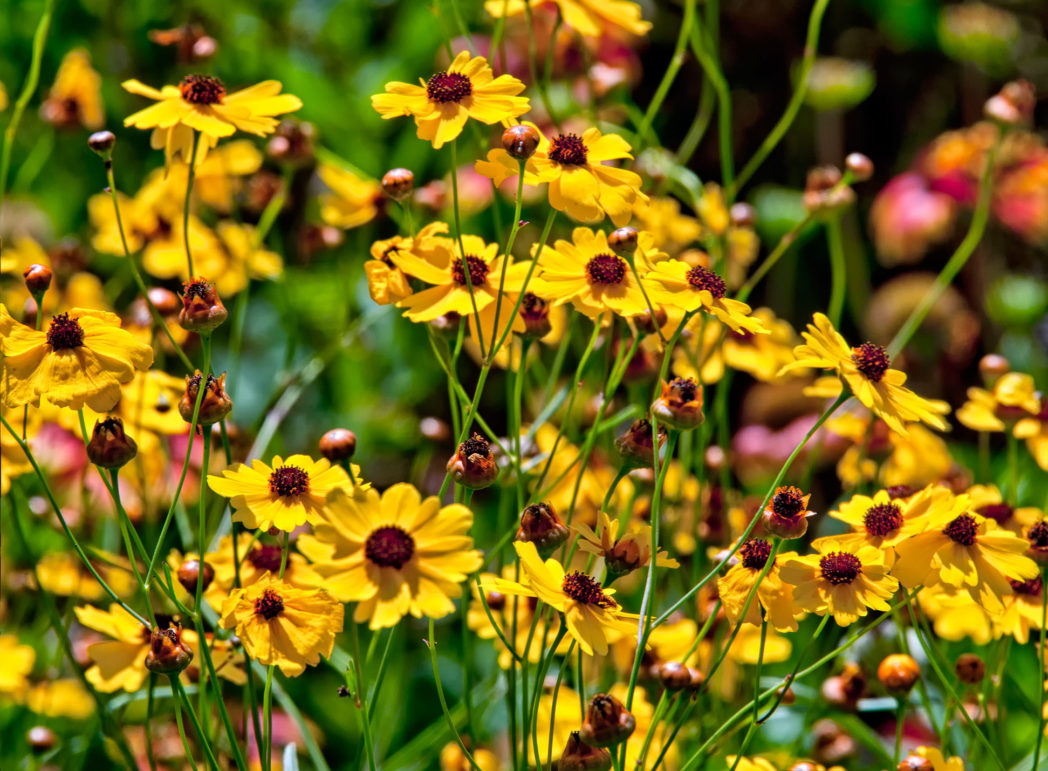Lanceleaf tickseed
Pictured above: Lanceleaf tickseed (Coreopsis lanceolata) by Stacey Matrazzo. Click on terms for botanical definitions. View post as a PDF.
Lanceleaf tickseed (Coreopsis lanceolata) is a perennial wildflower with conspicuously sunny blooms. The flower consists of a dense head of yellow-orange disk florets, surrounded by bright yellow ray florets. The rays are four-lobed or notched. The flower stalk arises from a clumplike basal rosette of lance-shaped leaves (giving the plant its species epithet and the descriptor in its common name). The leaves are grass-green in color and become lobed as they move up the stem. They are oppositely arranged.
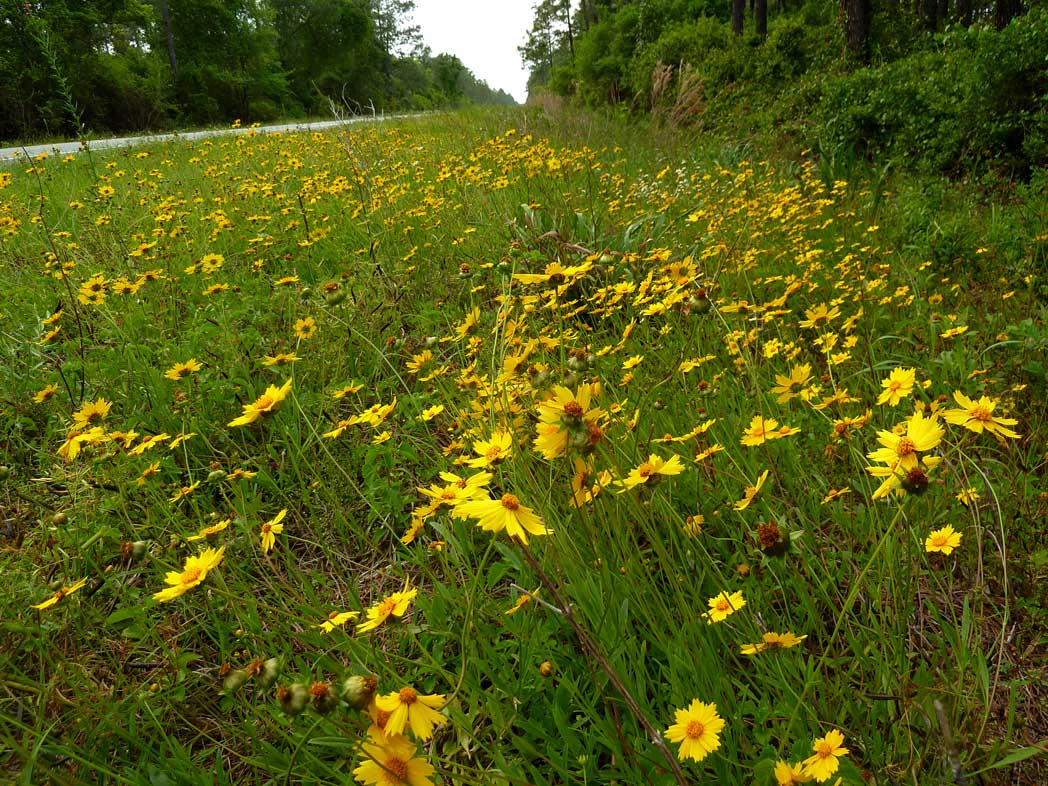
Lanceleaf tickseed typically blooms in spring and sometimes into summer, attracting butterflies and other pollinators. Its seeds are commonly eaten by birds and small wildlife. It occurs naturally in moist sandhills, marshes, and along swamp edges.
The genus name Coreopsis is derived from the Greek words koris, meaning “bug,” and opsis, meaning “view.” This refers to the shape of the fruit and is also the source of the plant’s common name, “tickseed.”
Lanceleaf tickseed is one of 12 species of Coreopsis native to Florida. Coreopsis is Florida’s state wildflower.
Family: Asteraceae (Daisy, aster or composite family)
Native range: Panhandle; Alachua, Lake, St. Johns, Suwannee and Volusia Counties
To see where natural populations of lanceleaf tickseed have been vouchered, visit www.florida.plantatlas.usf.edu.
Lifespan: Perennial
Soil: Moist, well-drained soil
Exposure: Full sun to partial shade
Growth habit: 12”–30” tall
Propagation: Seed, division
Florida regions of landscape suitability: North, Central
Garden tips: Lanceleaf tickseed is very adaptable and does well in a garden or landscape setting. It can be used in butterfly or wildflower gardens, or in a mass wildflower or meadow planting. It is a prolific self-seeder and may become weedy if not maintained.
Lanceleaf tickseed plants are often available from nurseries that specialize in Florida native plants. Visit www.PlantRealFlorida.org to find a nursery in your area. Seeds can be purchased through the Florida Wildflower Growers Cooperative.
Learn more about Lanceleaf tickseed from the Florida Native Plant Society and the Institute for Regional Conservation.
For information on other Coreopsis species, see these resources:

